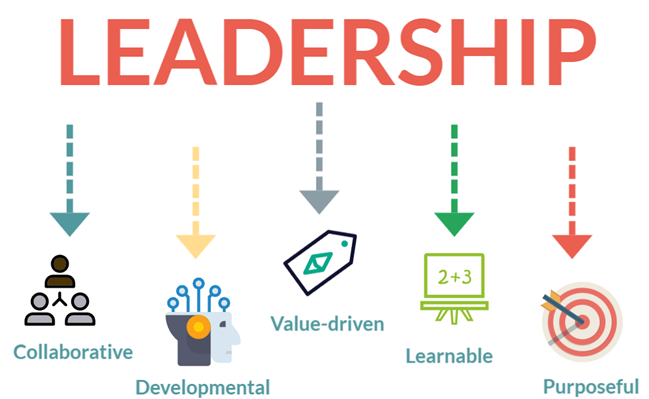
Fall 2022
Leadership Among Graduate Students and Trainees as a Means of Shaping Future Health Equity Advocates
Adati Tarfa, PharmD, MS✉ and Dylan Serpas, MS✉; Health Equity SIG

Health equity intersects the work produced by scholars within the Society of Behavioral Medicine (SBM). Graduate students and trainees from marginalized backgrounds face exceptional barriers in their efforts to study health inequities including the scarcity of mentors and personal networks, insufficient experience.1 There is a need to strengthen leadership opportunities for minority scholars which may, in turn impact on the services provided to underrepresented groups.2 Professional organizations can foster leaders and the exchange of ideas and information among their members who belong to targeted communities relative to the advancement of health equity in laws, policies, and programs. This article introduces student-leaders’ experiences in the Health Equity Special Interest Group (HE SIG) and the opportunities they have explored at SBM. We offer peer examples of student professional development and leadership in the organization.
Growth is an inevitable component of the graduate student/trainee experience. It may occur through personal events, conference presentations, coursework, externships, or other fundamental professional and personal experiences. Taking on leadership roles in any capacity can be an important way to develop as a student/trainee and as a professional. We believe optimal leadership opportunities comprise 5 facets (See Figure 1) that co-exist and function to develop stronger professionals. Ideal leadership should offer opportunities for collaboration whether with other students, trainees, or professionals.3 Leadership should be developmental in offering ways to improve one’s professional or personal goals. Furthermore, leadership can be fostered within SBM where the support from other SIG members provides rich opportunities for supportive leadership to assist one in learning their role.
Pursuing leadership consistent with one’s own values may ensure genuine and valuable contributions.4 Additionally, the purpose of leadership will also be satisfied if it is consistent with one’s values.5 Leadership can occur across a spectrum of capacities. It may not comprise a formal or elected role.

Figure 1. Positive Leadership Experiences
Anecdotes from Student Leaders
Adati Tarfa: “When I started my leadership experiences at SBM , I sought opportunities to improve my self-confidence and reduce the imposter syndrome salient in graduate students’ experiences. Sharing a professional space with scholars across various disciplines and co-creating works to enhance health equity empowers me to feel passionate about contributing to the field of behavioral medicine. I reached out to the Health Equity SIG to learn about the opportunities for students. I was connected to the Student Liaison whom I worked closely with on newsletter for the SIG. I used that relationship I formed with another student to learn about opportunities within the SIG and consider if the Student Liaison position will be a good fit for me. I was encouraged to apply to the position and acted as the Student Liaison for 2020-2021. Working with other scholars interested in health equity confirmed my ability to produce important scholarly work in the field.”
Dylan Serpas: “My search for leadership experience in SBM was driven by my interest in expanding my view of health beyond the ideas held within clinical psychology. I was interested in working with and learning from professionals and graduate students who share my professional interests and who may be outside of my training field of clinical psychology. Initially, I joined the SIG listservs and received emails regarding the HE SIG student advisor committee seeking new student members. I was connected with Adati who helped me explore my interest in the organization and leadership. This coincided with Adati’s term as student liaison concluding at which point, I took over. My initial connection with another graduate student was instrumental in fostering my search for involvement in the organization. The SBM community has also provided me with professional development experience in my possession of responsibilities as the student liaison for the health equity Special Interest Group (SIG). SBM may only formally convene as a conference one week per year; however, holding a leadership position or being involved within the SBM community as a graduate student/trainee can maintain connections, foster professional growth, and improve the quality of professionals in the field.”
How to become involved
We described the capacity for leadership to foster greater professional development among graduate students/trainees. Leadership opportunities offer ways to develop a supportive professional network allowing us to navigate the barriers that impede our capacity to achieve our true abilities as leaders. SBM possesses 25 SIGs and each focus on a distinct area in behavioral medicine. SIGs are open to students/trainees and many offer student leadership positions. Becoming involved in a SIG in any capacity can help students and trainees develop their professional interests and connect with a broader network of other like-minded individuals with similar interests. Consider also reaching out to SIG chairs to see if any positions are available, and you can always join the Student SIG which can help you connect with SBM's other SIGs. In addition, SBM offers student volunteering opportunities at its Annual Meeting which often include reimbursement for conference registration.
References
- McCarty Kilian C, Hukai D, Elizabeth McCarty C. Building diversity in the pipeline to corporate leadership. Journal of Management Development. 2005;24(2):155-168. doi:10.1108/02621710510579518
- Fowler BA. Facilitators and barriers to leadership and career opportunities in minority nurses in public health departments. Public Health Nursing. 2020/11/01 2020;37(6):821-828. doi:https://doi.org/10.1111/phn.12800
- McPherson K, Headrick L, Moss F. Working and learning together: good quality care depends on it, but how can we achieve it? BMJ Quality & Safety. 2001;10(suppl 2):ii46-ii53.
- Sendjaya S, Sarros JC, Santora JC. Defining and measuring servant leadership behaviour in organizations. Journal of Management studies. 2008;45(2):402-424.
- Clark RA, Hartline MD, Jones KC. The effects of leadership style on hotel employees' commitment to service quality. Cornell hospitality quarterly. 2009;50(2):209-231.